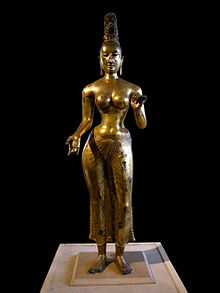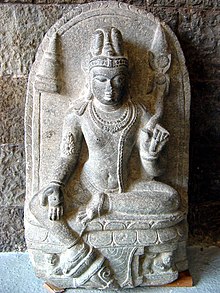Varadamudra


Hand gesture in Indian religions
The Varadamudra (Sanskrit: वरदमुद्रा, romanized: varadamudrā) or Abheeshta Mudra is a mudra, a symbolic gesture featured in the iconography of Indian religions. It indicates a gesture by the hand and symbolises dispensing of boons.[1] It is represented by the palm held outward, with the fingers outstretched and pointing downwards. Sometimes, the thumb and the index finger meet, forming a circle.[2]
The Varadamudra and the Abhayamudra are the most common of several other mudras seen on divine figures in the art of Indian religions.[citation needed]
References
- Dictionary of Hindu Lore and Legend (ISBN 0-500-51088-1) by Anna Dallapiccola
External links
 Media related to Varadamudra at Wikimedia Commons
Media related to Varadamudra at Wikimedia Commons
- v
- t
- e
 | This Buddhism-related article is a stub. You can help Wikipedia by expanding it. |
- v
- t
- e













